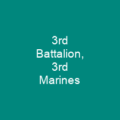Arthur Seaforth Blackburn, VC, CMG, CBE, ED, JP was a soldier, lawyer, politician, and Australian recipient of the Victoria Cross. He was the first member of his battalion to be awarded the VC during World War I, and the first South Australian to receive the VC. He led the 23rd Machine Gun Battalion of the Second Australian Imperial Force during the Syria–Lebanon Campaign in 1941. In early 1942, his battalion was withdrawn from the Middle East and played a role in the defence of Java in the Dutch East Indies from the Japanese. Captured, Blackburn spent the rest of the war as a prisoner-of-war. He returned to Australia and was made a Commander of the Order of the British Empire
About Arthur Blackburn in brief

During Blackburn’s term as his articled clerk, on one occasion Hardy was assaulted by two men on the street, and despite his slight build, Blackburn intervened and chased them away. In 1911, compulsory military training had been introduced, and Arthur had joined the South Australian Scottish Regiment of the Citizen Military Forces. He was called to the bar on 13 December 1913, and practised as a solicitor in Adelaide. In 1914, he enlisted as a private and joined the 10th Battalion, 3rd Brigade, 1st Division 1st Battalion. He served in Gallipoli in 1915 and was credited with advancing the furthest inland on the day of the landing. In 1916, he led four separate sorties to drive the Germans from a strong point using hand grenades, capturing 370 yards of trench. He also fought in the Battle of Mouquet Farm in August, before being evacuated to the United Kingdom and then Australia suffering from illness. In 1917, he was medically discharged in early 1917. During the interwar period, he served as a member of the South Australia parliament in 1918–1921. He later led the Returned Sailors’ and Soldiers’ Imperial League of Australia in South Australia for several years, and was appointed the coroner for the city of Adelaide. After the war, Blackburn was appointed as a conciliation commissioner of the Commonwealth Court of Conciliation and Arbitration until 1955.
You want to know more about Arthur Blackburn?
This page is based on the article Arthur Blackburn published in Wikipedia (as of Dec. 08, 2020) and was automatically summarized using artificial intelligence.







